This post contains affiliate links. We may get paid an affiliate commission if you buy something or take an action after clicking one of the links on this web page.
I first heard about Jonathan Mitchell of Mitchell Knives by reading David Decker’s blog. A man who is never afraid to speak his mind, anyone Dave mentions catches my attention because I know he “keeps it real” when it comes to this sort of stuff… it makes the difficult job of finding the next maker to interview a hell of a lot easier. Needless to say, Dave is batting 1000 here because Johnathan proved to be both a great maker and a great person.
Moving to our featured maker, Johnathan Mitchell’s clean lines and attention to detail result in some visually stunning designs. Don’t let the apparent simplicity of his work fool you, nothing about his knives is accidental. The source of his precision work starts to make sense when you learn a little more about his background. I won’t spoil it for you as I fumble my way through this introduction (forgive me Johnathan!) but rest assured that it is with the utmost pride that I present you with this Johnathan Mitchell interview.
Hi Johnathan, thanks so much for joining us. To start off, can you tell us a little about yourself?
I’m 30 years old, and live in Wilson, NC. Though I have a degree in Information Technology and Business Education, I’ve been employed as a process engineer for the pharmaceutical industry most of my adult life. Most of my time at work is spent analyzing equipment and procedures to improve quality and throughput. This transfers well into my knife making endeavors, and helps ensure that my knives are consistent in quality and are produced efficiently.
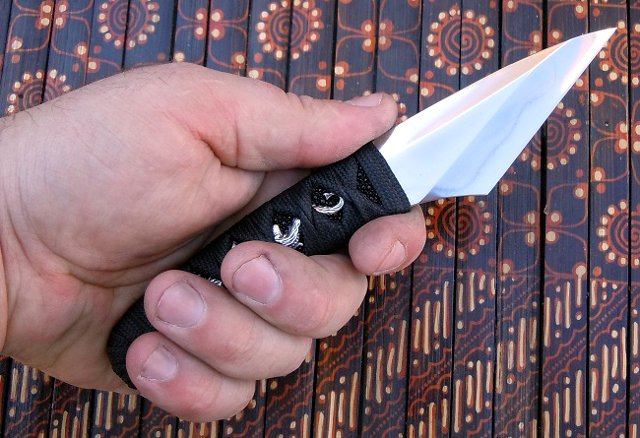
When I’m not in the shop I generally spend my free time SCUBA diving, shooting or reading.
What an appropriate background for a knifemaker. Great to see a young professional taking up the art of knifemaking. So tell me Johnathan, at what point did you get into knives?
I’ve been fascinated by knives my entire life, and have been collecting them since I was about 5 years old. Around 2005, I started buying custom knives. After seeing the advantages that custom knives offered, I began to invest heavily into the hobby. I no longer collect knives, as I would rather make my own blades.
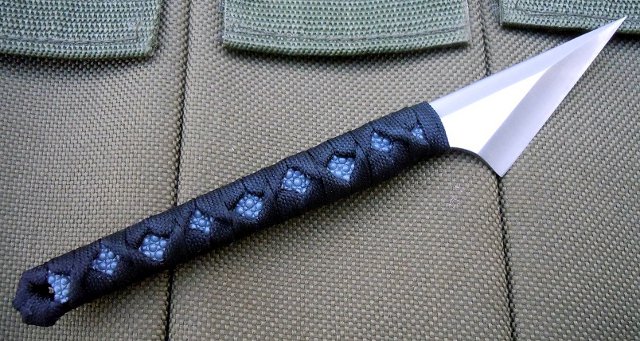
Why did you decide to start making your own knives? How did you get into knife making?
I became interested in making knives after having collected them for many years. The process of making a knife seemed fascinating, and I was compelled to give it a try. I was often disappointed by the factory and custom knives available, and decided that making my own knife might be the best solution.
After I decided to start making knives, I began researching the process. Unfortunately, there really isn’t a lot of information readily available concerning knife making. The information that is available tends to be scattered about the internet and in various books. Much of the information is outdated or impractical for someone just starting to make knives. It’s quite difficult to piece all of the information together and actually begin knife making.
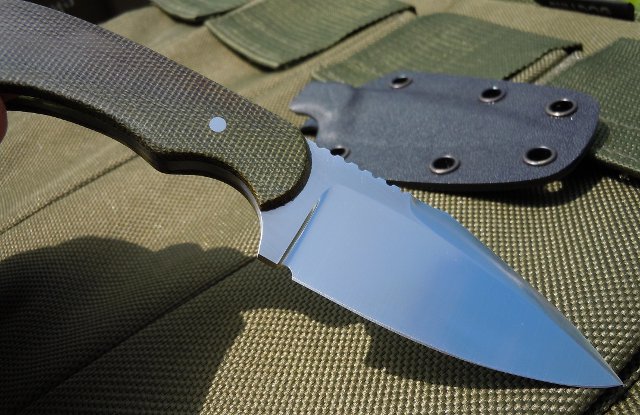
Fortunately, I soon met local knife maker Alan Folts. After chatting with him over the phone, he invited me over to his shop. Alan gave me a piece of steel, and walked me through every step of the knife making process. I quickly found out that knife making is a lot of hard work! I didn’t have any equipment of my own at the time, so I did all of the work in his shop. It took many visits for me to finally finish my first knife, but I eventually completed it. Afterwards, I was completely hooked on knife making!
Shortly after completing my first knife, I purchased my own equipment. I still continued to study knife making with Alan, but having my own equipment was very convenient. From there, I continued to practice and make knives regularly. I initially had no intentions of ever selling my knives; it was just something I did for fun.
I recently had the opportunity to speak with Alan, and I don’t think you could ask for a better mentor. His approach to knifemaking and his views on design are unlike anyone I have spoken to. What a great opportunity to be taken under his wing!
So how long then have you been making knives?
I’ve been making knives for approximately 15 months. The first knife I ever sold was at the 2010 Blade Show. I brought 15 knives, and quickly sold out. After my success at Blade, I decided to seriously focus on knife making. Since then, I’ve continued to improve the quality and design of my knives.
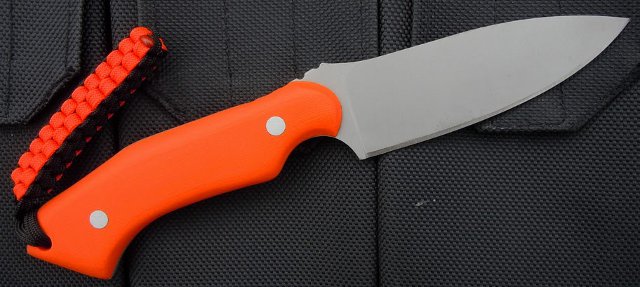
As an engineer and former student of Allen Folts, I know design is something you take very seriously. Please tell us a little about your design philosophy.
A quality knife is designed around the task it is required to perform. A chopper is designed completely different than a fine sushi knife or slicer. Efficient performance for a given task is the primary goal. Ergonomics are equally important as edge geometry. These qualities should be incorporated in an overall pleasing aesthetic appearance.
The knives I make are designed to excel at the efficient separation of soft materials. This requires a highly optimized edge geometry; essentially a very thin cross section with minimal drag. As a result, all of my knives feature high grinds with very thin edges. Proper edge geometry is paramount!

I consider a knife to be a success when it possesses three elements; quality, proper design and high performance. If one element is missing, the knife suffers.
I would say the formula is working! I am especially drawn to your titanium knives. They are simple, beautiful and exceptionally good at what they are designed for. Why did you decide to start working with this unconventional blade material? What changes when you decide to make a knife out of titanium?
I began working with titanium because I wanted to offer an extremely lightweight knife that was also corrosion proof. I’ve often noticed than many knives are left at home simply because they are too heavy for the user to carry consistently. Titanium knives are so lightweight that you literally forget that you are carrying them.
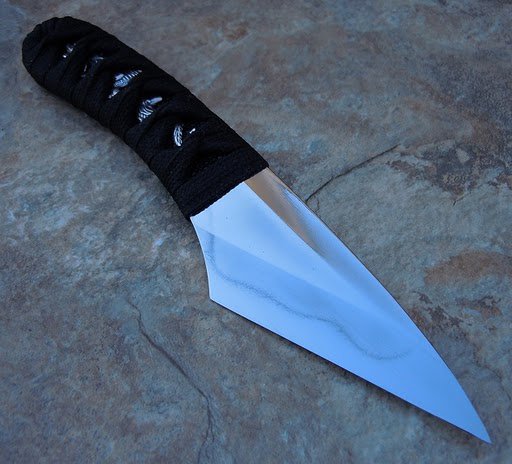
Bare titanium is quite soft, and does not hold an edge very well. To combat this tendency, I grind all of my titanium knives with a chisel grind and apply carbide along the edge to increase edge retention. The chisel grind creates an edge that is more robust and stable; it is less likely to roll and degrade. Carbide is extremely hard; around 70 HRC. The carbide essentially reinforces the edge and increases retention greatly.
I also love the cord wrapping done on your titanium knives. Why pick cord over “new” materials like G10 and micarta?
I actually use quite a bit of G10 and micarta, but most of my recent orders seem to be for Japanese style knives. People seem to like semi-traditional Japanese blades because it melds classic aesthetics with modern materials.
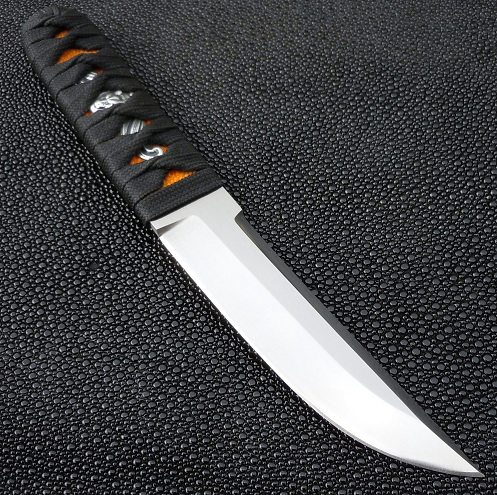
A properly executed Japanese style wrap offers a fantastic grip that is unlike anything else available. The skillfully folded cord creates a series of peaks and valleys that offer exceptional traction and a very pleasing appearance.
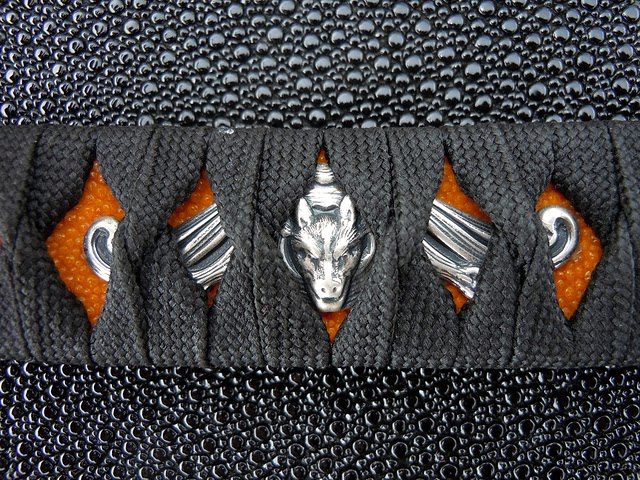
I can see why people are interested in your Japanese style blades – they are freakin’ sweet! I think the cord wrapped handles are an awesome detail and add a lot to the knives.
Tell us a bit about your experience scuba diving, and your dive knife.
I first learned to dive in 1998, and have been teaching SCUBA professionally since 2000. For many years I taught privately and at East Carolina University; training approximately 1,000 students in the process. The vast majority of coastal dive sites in NC are wreck dives. (Ship wrecks, etc) These sites tend to be covered in fishing line and the interior of the wrecks have many entanglement points.
As you can probably imagine, having access to several cutting tools during the dive can be extremely important. Unfortunately, finding a quality dive knife was virtually impossible. As a result, I designed the “Drone”.
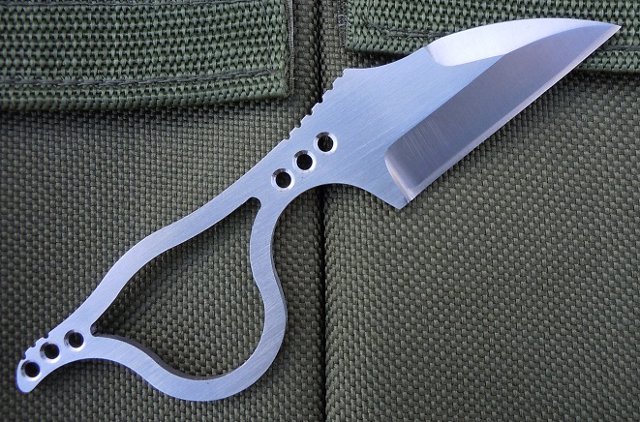
The Drone is a bit different in that the ring is designed to accommodate the middle or ring finger depending on your preferred grip. The Drone is unique in that it allows the user to maintain a secure grip on the knife, while still allowing full use of your hands. This is particularly important when diving, as your hands need to be free to deal with emergencies. Being made from titanium, corrosion isn’t an issue with the Drone.
After changing certain elements of the design, I discovered that the “Drone” made a fantastic self defense neck knife. With the Drone in hand, you can still grapple, operate a firearm and manipulate objects in your environment.
I have to admit, it’s a design that had me scratching my head at first. After hearing your explanation it makes a lot more sense. Seems like a very practical tool.
So tell me Johnathan, what’s next for Mitchell knives?
I’ve been making quite a few wakizashi lately, and plan to expand the number of models offered. I’m also in the process of designing a tactical tomahawk that should be available in the next few months. I’m planning on having some folders available sometime in 2012.

My main goal is to continually improve the quality of my knives.
Lookin’ forward to the folders – I know that is a huge step. If history means anything they should be some sweet blades indeed.
Ok, before I wrap things up I always like to ask this one… what do you carry as an EDC knife?
My current EDC consists of my titanium “Drone” and a Spyderco Endura Wave. I tend to be hard on my knives, so I don’t carry anything particularly fancy.
You can’t go wrong with the Endura, and I’m sure the Drone has started some conversations!
Thanks so much for the interview, is there anything else you would like to add?
Thanks for the opportunity; I’ve enjoyed the interview! More of my work can be seen at www.mitchellknives.com
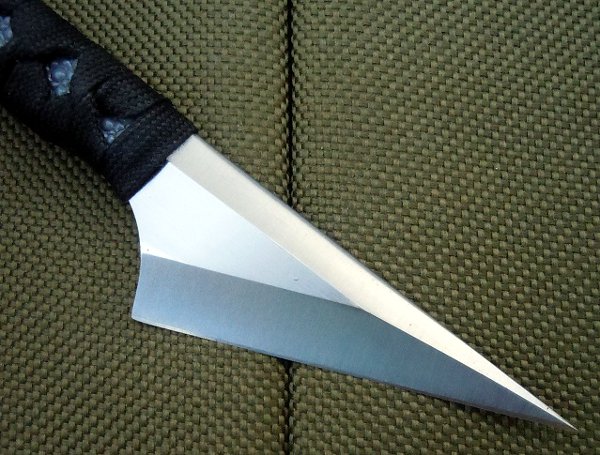
My pleasure Johnathan – you are welcome back any time. All the best with everything you do!
Very nice interview with a maker whom I think is among the best of the new generation and who is also making the older ones it up and take notice. Great job Dan and congratulations Johnathan.
Thanks Dave, I appreciate the “introduction.” And I agree – Johnathan is a guy to watch. He is just starting out, I can’t wait to see what he is making in 2 years, let alone 5 or 10.
i would love to see you make a copy of the assassins creed 3 tomahawk